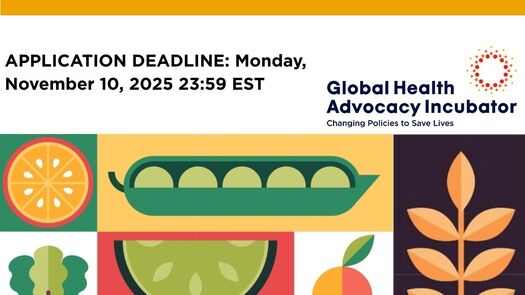November 7, 2025
May 12, 2025
From Policy to Plate: The Role of Governments in Reducing Sodium
You might think of salt as just a simple seasoning, but did you know that excessive sodium intake is a global health problem? Consuming too much sodium can increase your risk of heart disease, stroke and several other noncommunicable diseases. Shockingly, almost two million deaths globally are linked to high sodium diets. In most countries, people consume more than double the amount of sodium recommended by the World Health Organization (WHO), which is less than two grams per day (that's about one level teaspoon of salt).
So, what should we know about sodium and salt? Are they the same? Not quite. Sodium is a mineral found naturally in foods and drinks, and it's also added during food processing in the form of salt. Salt, or sodium chloride, is 40 percent sodium and 60 percent chloride. It's used to flavor food and as a preservative. In many countries, processed and ultra-processed foods are the main sources of dietary sodium. Think: bread, cereals, processed meats and dairy products.
In most countries, the main source of the sodium we consume is in processed and ultra-processed foods — not the salt we add during cooking or at the table. While in other countries, there is a worrisome shift toward increased consumption of these products, which are displacing traditional diets. This leaves consumers with little to no control over their sodium intake, as the food and beverage industry determines the sodium content of its products. As a result, consumers struggle to make healthier decisions, contributing to excessive sodium consumption and worsening diet-related health crises.
Strong government action is not just necessary — it’s urgent. Implementing mandatory sodium reduction target policies can compel the industry to lower sodium levels, as many countries have already done, improving food environments and prioritizing public health over commercial interests.
Reducing sodium intake is not just good for your health; it's also a cost-effective measure for governments. The WHO has identified sodium reduction as a “best buy” intervention for preventing diet-related diseases. For every dollar invested in sodium reduction, there's an estimated return of at least $12. Yet, only 26 percent of the world’s population lives in countries with mandatory sodium reduction measures.
That’s why WHO and other international organizations recommend that governments implement mandatory sodium reduction target policies to reduce population-level sodium intake and protect the right to health. This policy is one of the most effective ways to reduce sodium intake, and consequently lower blood pressure and reduce the risk for cardiovascular diseases on a large scale. Evidence shows that setting these targets can improve health outcomes and save money for national economies. The goal of mandatory sodium reduction targets is to decrease the sodium content in processed foods by setting specific limits for each food category.
But sodium reduction policies shouldn't stand alone. They need to be part of a broader strategy to improve overall diet quality. This includes front-of-package warning labeling, marketing restrictions, fiscal policies and initiatives to make nutritious foods like fruits, vegetables and whole grains more accessible and affordable.
The Global Health Advocacy Incubator’s new position paper, Mandatory Sodium Reduction Targets for Processed Foods, lays out the steps needed to establish mandatory sodium reduction targets informed by country experiences where these policies have been successfully implemented. It provides clear, evidence-based recommendations for policymakers and advocates to develop effective mandatory sodium reduction target policies.
- Make it mandatory: A compulsory approach ensures stronger compliance and greater public health impact.
- Ensure transparency: Use accountability frameworks to protect public health from commercial interests.
- Use global or regional guidance: Align with WHO Global Sodium Benchmarks and regional targets (e.g., Pan American Health Organization, South-East Asia Region).
- Adopt a stepwise approach: Gradually reduce sodium levels over time, adding more food categories as needed.
- Set maximum limits: Use a “maximum limit” approach to facilitate enforcement and monitoring.
- Adapt to context: Use a comprehensive model in high-capacity settings; start with a conservative model in low-resource contexts.
- Standardize targets: Define sodium limits per 100 g (solids) and 100 ml (liquids).
- Plan for monitoring and enforcement: Establish monitoring led by independent, conflict-free institutions before implementation.
- Complement with other measures: Include nutrient declarations, front-of-package warning labels, and marketing restrictions among other best practices.
- Support behavior change: Use communication campaigns and education to reinforce policy impact.
Reducing sodium intake isn't just a health issue; it's a public policy priority that can save lives and cut healthcare costs. It's time for governments to take bold action and implement mandatory sodium reduction targets.




